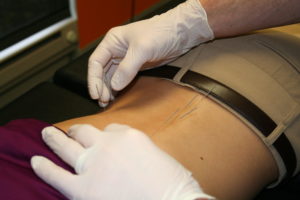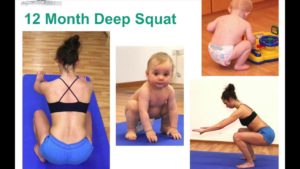Sports rehabilitation often confuses people in what it means. It has many different meanings depending on who you talk to and what their specialty is in. I want to explain what it means to us in our office and how we apply it to every single one of our patients. Don’t dismiss “sports rehabilitation” by thinking that you don’t participate in sports so it doesn’t apply to you. Everyone has their own “sport” that they get involved in on a daily basis. This includes, but not limited to: playing with your kids, crossfit, running, being able to walk to the mailbox to get your mail, or anything that you want to be able to accomplish in your life that something is stopping you from.
Having said that, just because you don’t have an injury does not mean that you couldn’t benefit from sports rehabilitation. We want our patients to be prepared for anything that life throws at them. We look at how the body functions to see possible injuries waiting to happen. We look at how you do your sport and home exercises are huge in our office. We want to help you and in turn want you to be able to help yourself when you aren’t in our office.
Below I am going to give examples to hopefully help show you what our office does to apply the sports rehabilitation model to our office. These are based on real people we have seen in our office. We treat everyone in our office like they are part of our family. We look at the issue that you are having but look at the big picture to see what else could possibly be going on.
Example #1:
Female patient that is in her mid 40’s comes into our office with extreme low back pain. When she walked in she was leaning forward and unable to stand upright. She said when she woke up that morning she felt the pain and was unable to sleep very well that night. At the time, she did not have pain down either leg.
Once in our office I checked her range of motion, which was very limited, and very specifically adjusted her mid back and sacrum (tailbone). Afterwards, acupuncture was used to increase blood flow, speed up the healing process, and she was given a very specific exercise to help her decrease pain and increase function while she was not at the office. The exercise that was given to her is patient specific. After just a couple visits she was feeling much better and then we assessed her function of her low back to help stabilize her to reduce the chance of injury in the future.

Example #2:
Young 20 year old female presented with headaches that have been plaguing her since high school. She had seen an MD, neurologist, and pain management specialist whom had run multiple tests and with no true answers; she was prescribed prescription medications. She was seeking a more natural approach to handling her headaches and anxiety about them.
After a thorough exam, the patient had her neck and mid back adjusted. We then talked about her posture while working; proper work ergonomics are very important. We also talked about specific ways for her to reduce her anxiety and focus on her breathing if she felt anxious. Headaches improved greatly with chiropractic care along with exercises for her to perform to strengthen and stabilize the front neck muscles. These help retrain the brain and teach it how to have functional stability. We all learn functional stability as a child but often loose it as adults because of injuries or improper movements.
Example #3:
A 30 year old male patient comes into our office with right hip pain (located in the front); he is an office worker that sits most of the day; he is active outside of work and works out about 5 days a week at one of the local gyms. He says standing makes the pain worse and working out (lifting and running) is starting to suffer because of the pain.
After a thorough exam, it was determined that the hip seemed to actually be the issue. With hip mobilization and hip treatment with specific exercise he started feeling improvement within a few visits. We also watched him do some weight lifting in office to help give pointers on form. He has been feeling good and now comes in on a maintenance plan to help himself feel better and prevent future injuries.

I hope this helps you understand what our office does and how we can help you be your best. There is no “miracle” exercise that I give every patient that works; this is why an exam and visits are extremely important. Our goal is to decrease pain but also to increase function and stability which helps prevent re-injury. We pride ourselves on helping you help yourself, we merely give you the knowledge and power to help yourself. Move better, feel better is our slogan. Once you understand what and why certain movements are harmful and hurtful to you, you understand more about what we stand for. We love the challenge to help people with a combination of our tools: chiropractic, acupuncture, and sports rehabilitation.
